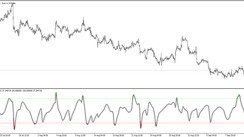Asian Currencies Remain Bearish Despite Relaxation of Short Bets
A recent Reuters poll reveals that short bets on most Asian currencies, albeit slightly softened, remain lodged in a pessimistic outlook. This sentiment is reinforced by diminishing hopes for an immediate U.S. interest rate cut, keeping the dollar strong and causing market turbulence in China—thus shaking investor confidence.
Minor Fluctuations in Asian Currencies
The South Korean won, Indonesian rupiah, and Taiwanese dollar reported minimal reductions in bearish bets. Conversely, the Chinese yuan and Singapore dollar noted minor upward adjustments, according to the twice-monthly survey involving 10 participants.
US Dollar Soars, Fueled by Investor Beliefs
This week, the U.S. dollar touched its highest level in nearly three months compared to a basket of currencies, buoyed by investors losing faith in the Federal Reserve to instigate interest rate cuts as early as March.
No Rush for the Federal Reserve's Rate Cut
Analysts at DBS suggest that the Fed is in no hurry to slash rates, which causes a dampening impact on the markets. They argue that it would take a series of negative events for the Fed to react swiftly after the recent surge.
Boosted by strong U.S. economic data, surpassing market projections such as the closely-watched jobs report, the chance of a rate cut in March seems remote.
Bearish Forecasts Persist Amid China's Economic Woes
Simultaneously, a string of disheartening economic data from China, Asia's largest economy - inflation and setbacks in services and manufacturing-hinders analysts from altering their pessimistic projections for the region’s currencies. As a result, short bets on the yuan have escalated, reaching their highest since November.
Optimistic Outlooks for the Indian Rupee
Conversely, the Indian rupee stands out, with investors maintaining a positive outlook on the currency which has performed well this year. Analysts at Maybank attribute this to global fund buying and a shrinking trade deficit. They maintain an optimistic perspective on the rupee's mid-term prospects, referencing favorable growth and inflation rates.
The survey focused on market positions in nine Asian emerging market currencies and applied estimates of net long or short positions ranging from -3 to +3. A score of +3 indicates a market heavily weighted in U.S. dollars.





